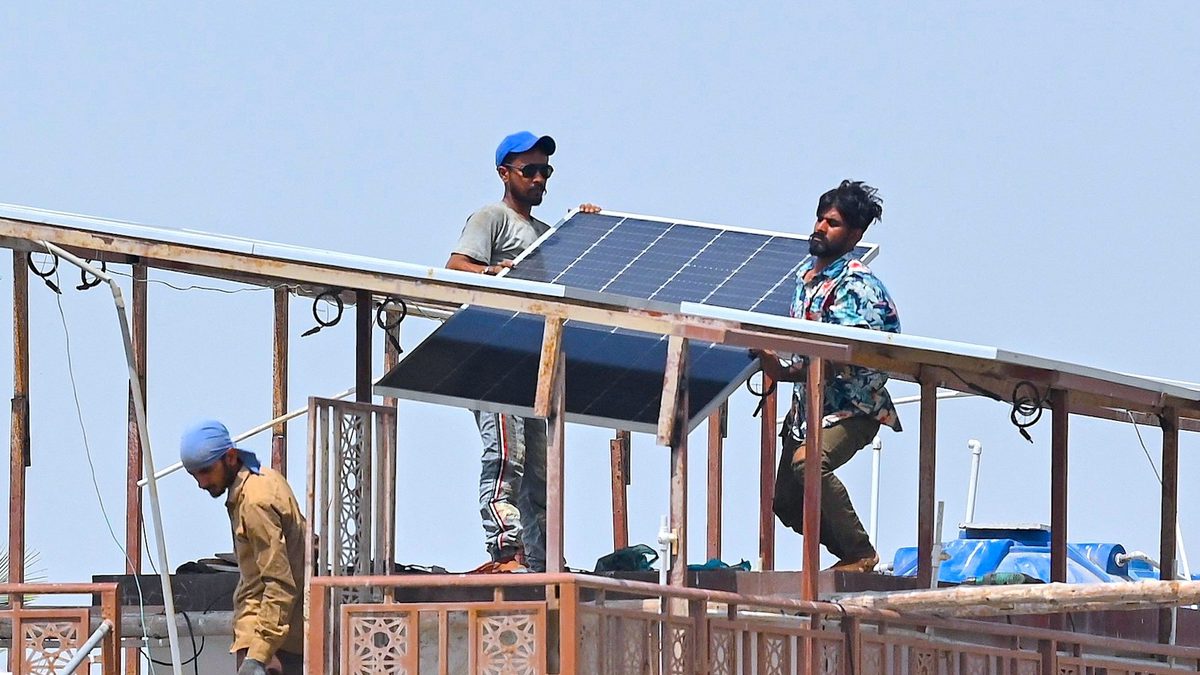E360
AUGUST 12. 2025
In “Amazon Tipping Point” — Third-Place Winner of the 2025 Yale Environment 360 Film Contest — Brazilian filmmakers capture striking images of clear-cutting and explore how human activity is so damaging the world’s largest rainforest that it will not be able to recover.
AUGUST 5. 2025
Biologists once thought that humans did little to affect the course of evolution in the short term. But a recent study of cod in the Baltic Sea reveals how overfishing and selective harvest of the largest fish has caused genetic changes that favor slower growth and smaller size.
JULY 28. 2025

Climate change is bringing ever more precipitation and rising seas to low-lying Denmark. In response to troubling predictions, Copenhagen is enacting an ambitious plan to build hundreds of nature-based and engineered projects to soak up, store, and redistribute floods.
JULY 24. 2025
For centuries, the Native people of North America used controlled burns to manage the continent's forests. In an e360 interview, ecologist Lori Daniels talks about the long history of Indigenous burning and why the practice must be restored to protect against catastrophic fires.
JULY 21. 2025
Plagued by illegal logging and corruption, Liberia has been losing its forests at an alarming rate. But its new strategy to make direct payments to communities that agree to prohibit cutting and protect their trees is seen as a potential model for other developing nations.
JULY 11. 2025
Alaska’s Tongass is the world’s largest temperate rainforest and a sanctuary for wildlife. The Trump administration’s plan to rescind a rule banning roads in wild areas of national forests would open untouched parts of the Tongass and other forests to logging and development.
JULY 9. 2025

Fed up with pricey electricity from an unreliable grid, Pakistanis have snapped up cheap solar panels. In an interview, Muhammad Mustafa Amjad, of Islamabad-based Renewables First, says his country can stand as a model for other nations as they transition away from fossil fuels.
JULY 8. 2025
As growing populations denude its slopes and heavy rain intensifies, Mount Elgon has become increasingly vulnerable to landslides. In response, Ugandan farmers are planting native trees and changing the crops they plant in efforts to build resilience against future disasters.
JUNE 27. 2025
The Trump administration is outwardly hostile to clean energy sourced from solar and wind. But thanks to close ties to the fossil fuel industry and new technological breakthroughs, U. S. geothermal power may survive the GOP assaults on support for renewables and even thrive.
JUNE 20. 2025
In conflict areas from Ukraine to Palestine, storage facilities holding seeds vital for future plant breeding are being lost. Scientists are rushing to send some remaining seeds to a “doomsday” vault in Norway so they can be available to provide food crops in a warming world.
JUNE 18. 2025
A warmer world is expected to bring more thunderstorms, especially at higher latitudes. Scientists are now reporting a dramatic surge in lightning in the Far North and are scrambling to parse how this could affect wildfires, the chemistry of the atmosphere, and Arctic ecosystems.
JUNE 16. 2025
In the long-contentious Klamath River watershed, an experiment that turned a barley field into a wetland not only improved water quality. It also offered a path forward for restoring populations of two endangered fish species that are of cultural importance to Native tribes.
JUNE 11. 2025

A growing number of cities have launched initiatives to reuse the wood waste from construction and demolition that now ends up in landfills. The challenge, proponents say, is to deploy new techniques for disassembling old buildings and markets for repurposing the salvaged wood.
JUNE 10. 2025
The flooding of Ukraine’s Irpin valley thwarted Russia’s assault on Kyiv in 2022. Now, scientists are proposing Europe create a band of restored and protected wetlands along its eastern borders to deter future Russian aggression, and military strategists are taking notice.